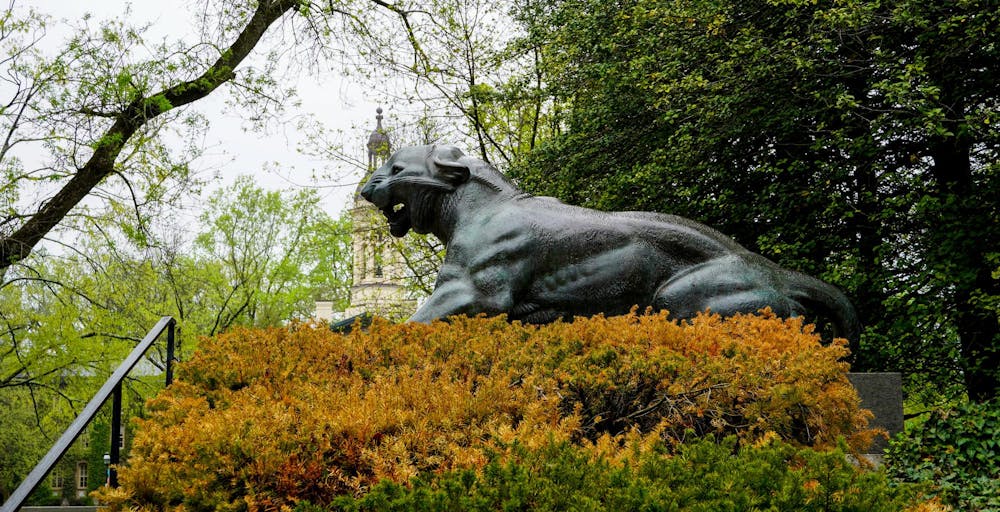The first Princeton class admitted following the Supreme Court decision banning race-conscious affirmative action has experienced little change in racial diversity, according to enrollment statistics released by the University on Wednesday.
The University’s admission numbers are in stark contrast to its peer institution, MIT, which saw a dramatic drop in Black and Hispanic/Latine enrollment following the ban. Hispanic/Latine enrollment at Princeton experienced a one point drop, from 10 percent to nine percent, while Black enrollment shifted by less than one percent.
Asian American enrollment, however, experienced a 2.2 point decrease from 26 percent to 23.8 percent — an outcome shared by Yale University, which saw a six point drop. The share of Asian American students enrolled, notably, is not an outlier for the University, with the population making up 20.5 percent of the Class of 2025, and 25 percent of the Class of 2026.
University President Christopher Eisgruber ’83 announced his intention to maintain diversity at the University in spite of an affirmative action ban during a January 2023 interview with The Philadelphia Inquirer.
“We’re going to be as creative as we can within the boundaries of the law,” he said ahead of the Supreme Court ruling.
In an emailed statement to The Daily Princetonian regarding how the numbers managed to stay stable, University spokesperson Jennifer Morrill wrote, “We can’t speak to the admissions processes of other institutions, either before or after the Court’s ruling. At Princeton, we are adhering to the limits set by the ruling and continuing to use a holistic admission process that involves a highly individualized assessment of the applicant's talents, achievements and his or her potential to contribute to learning at Princeton.”
“It’s important to note that our admissions team continues to broaden its outreach to potential applicants to encourage the most talented students from across society to consider Princeton,” she added.
Alongside the release of enrollment statistics, the University has included a new note explaining that its admission cycle was in line with the court’s ruling.
“Princeton’s holistic admissions process carefully adheres to the limits set out by the Supreme Court in the Students for Fair Admissions v. Harvard College and University of North Carolina cases,” the announcement reads.

Other groups also experienced drops in enrollment. The class has no Native Hawaiian American or Pacific Islander students, while in previous years the number floated at less than one percent. International student representation saw a two point drop as well, falling from 14 percent of the Class of 2027 to 12 percent in this year’s first-year class.
For the first time, the University has also disclosed the proportion of white students enrolled, making up 31.3 percent of the student body. 7.7 percent of the student body’s racial identity is unknown.
Following the court’s decision, the University updated its application process and invited applicants to reflect on their “lived experiences” through their application essays.

The enrollment statistics also reveal other expansions in the University’s efforts to diversify the student body.
71.5 percent of the class qualifies for financial aid, a 5.5 point climb from the Class of 2027. 36 transfer students were admitted alongside 2028, marking the largest transfer student cohort since the program’s reinstatement in 2018. 23 of the transfers are U.S. veterans.
Fewer first-years in the Class of 2028 are first-generation college students than in the Class of 2027, falling from 17 percent to 16.3 percent. 11.2 percent are children of alumni, compared to 13 percent in the Class of 2027.
The percentage of students who are Pell Grant-eligible remained stable, however, with 21.7 percent of the Class of 2028 being eligible.
In total, there are 1,411 first-time, first-year students, which marks a slight increase from the Class of 2027. The Class of 2026 remains the largest with 1,500 students — the first class admitted under the University’s student body expansion.
The Class of 2028 represents 48 states, Washington, D.C., and 56 countries.
Correction: A previous version of the piece incorrectly stated that Asian American enrollment dropped by 4.2 percent. In reality, it dropped by 2.2 percent.
Olivia Sanchez is an associate News editor for the ‘Prince.’ She is from New Jersey and often covers the graduate school and academic departments.
Please send corrections to corrections[at]dailyprincetonian.com.








